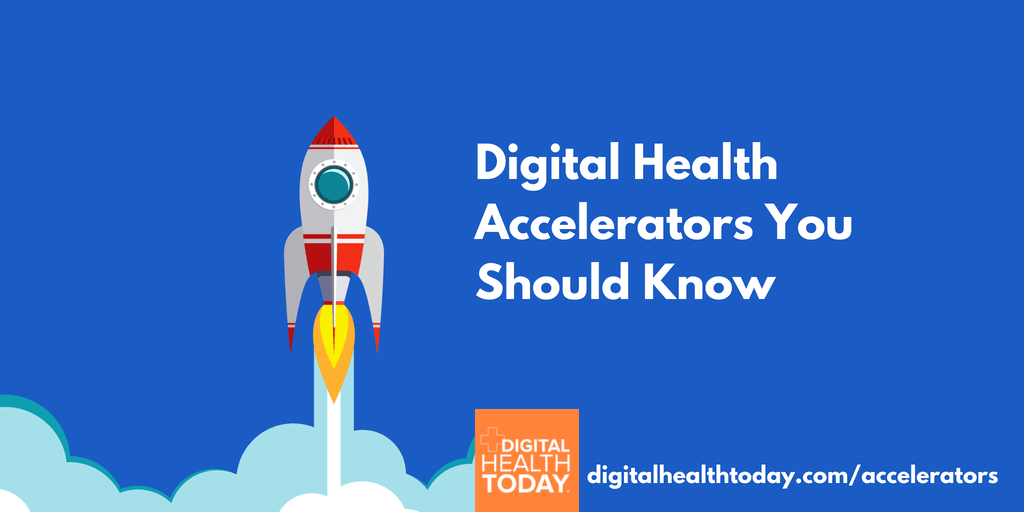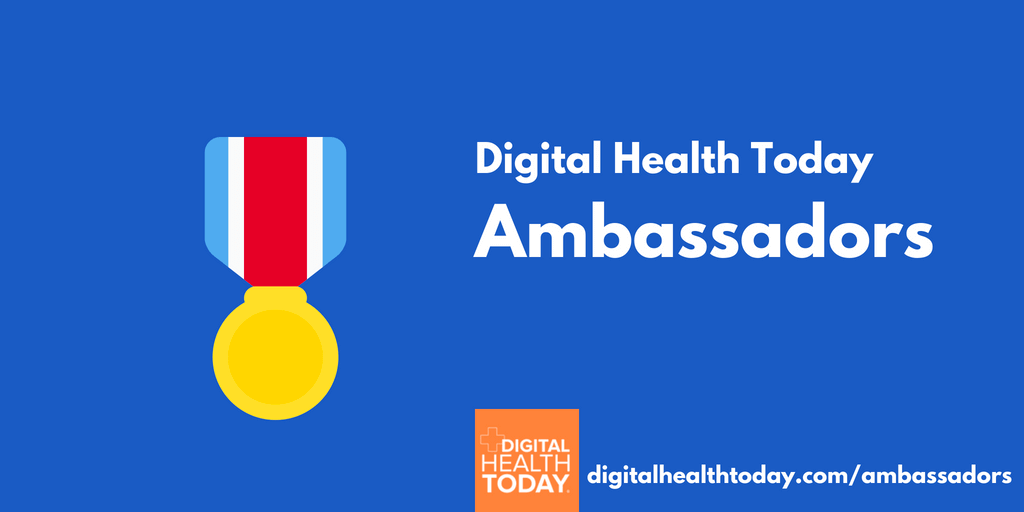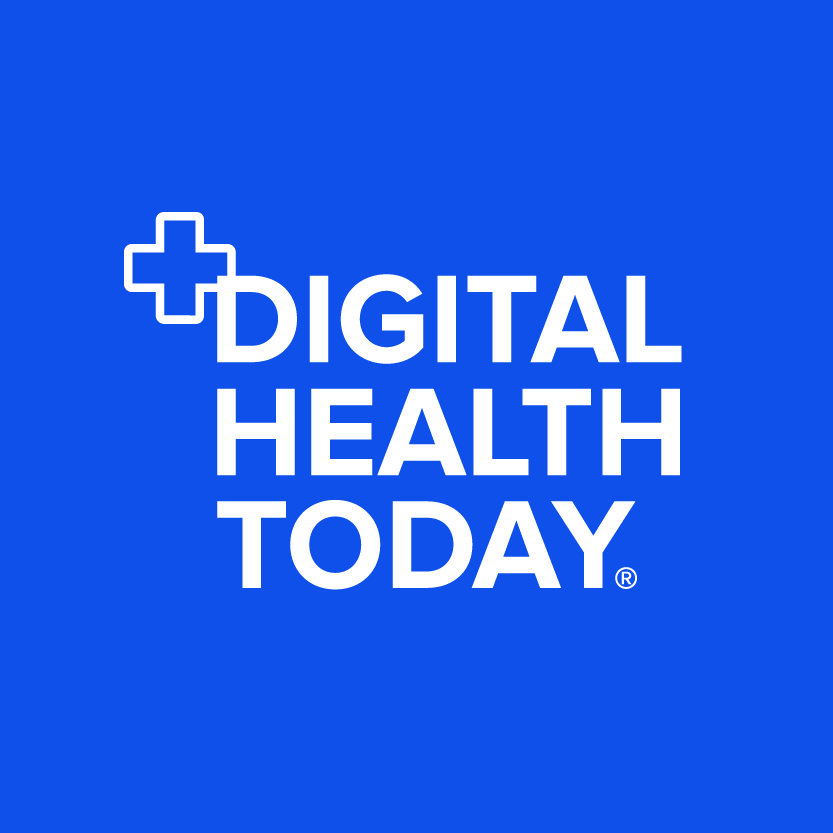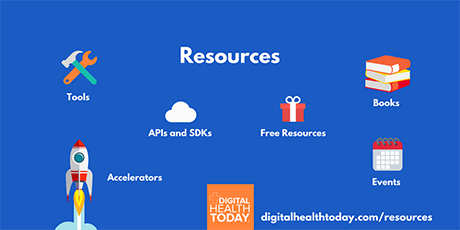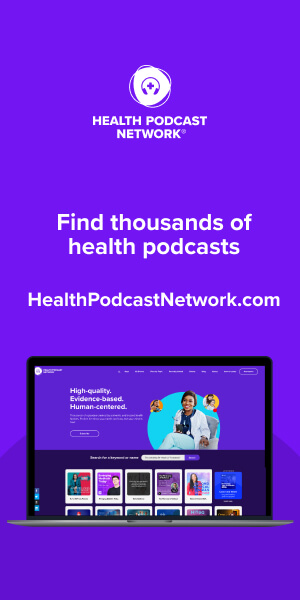Transcript
0:03 Tony Estrella
Welcome to Digital Health Today: Asia Pacific Edition, your go-to podcast to learn about the transformation of healthcare in a region with over 4.5 billion people across more than 40 countries. I’m your host, Tony Estrella.
Today, my guest is Stanley Li, founder and CEO of DXY. I’ve known Stanley for several years, and I’m excited to share what he’s learned through his 20-year journey to build one of the most impactful companies in healthcare within China. DXY is one of the largest services companies in this part of the world, and throughout their growth, Stanley has kept the consistent view of supporting individuals for their health, with a lens towards offering products for both prevention and sick care, which Stanley refers to as upstream and downstream. Welcome to the show, Stanley.
0:47 Stanley Li
Thank you Tony, thank you for having me here.
0:49 Tony Estrella
I’d love to start our conversation with understanding more about you. Why did you decide to get into healthcare?
0:55 Stanley Li
Sure. You know, I was born in North China. My hometown is Harbin. Harbin is a pretty cold city. And when I was three years old, my dad passed away. He died of a cerebral hemorrhage. So I was pretty young, I don’t even remember his face. But that gave me an impression that being a doctor could help him, if possible, and could help other people. So when I was growing up in my hometown, I decided to be a doctor. And when I graduated from high school, I passed the examination for medical school. I went to Harbin Medical University to begin my medical career, and after that, I became a neurologist. I work in the hospital and treat patients. So that gives me a lot of achievements that I feel I can help people. I think healthcare is a pretty good industry that you can devote yourself and your whole life [to], and there is a huge return, including the recognition (and reputation as well). The healthcare industry is pretty attractive to me.
2:07 Tony Estrella
That must have been a heartbreaking experience for you, especially at such a young age. Thanks for sharing such a personal story. I can relate to how childhood experiences shape who we become. Part of my motivation for choosing healthcare as a career comes from having an aunt who suffered through kidney failure, end-stage renal disease.
But let’s get back to your story. You’re now a doctor. What challenges motivated your career choices, including the decision to become an entrepreneur and business builder?
2:36 Stanley Li
Sure, actually, the challenge is very obvious. In China, we have over 1.5 billion people here; this is a massive number and people go to public hospitals to seek help. The doctors in the hospitals are pretty busy. I can still remember when I was practicing, usually I checked about 60 to 80 patients in a single day. And that is not even the highest record. My colleague, he is a dermatologist, and he can check over 120 to 150 patients in a single day. So the doctors are fatigued and burned out in China.
Another thing is that a medical career is a lifetime learning process, and every medical student and practitioner has to learn from day one and keep learning until you retire from this industry. Doctors have to learn a lot of things and receive updated knowledge quite often. These two things, I think, give doctors a lot of pressure.
So I decided to help doctors, but in a different approach. I mean, I can still be a doctor, like my colleague, and help patients, but that could be a fixed number in my whole career or life. But by doing DXY, I can help more doctors in China, and even help more patients. So I built up this website, built DXY 20 years ago, and decided to start my new test in this field.
4:18 Tony Estrella
So in a way, you were one of the pioneers for digital health in China. When we’ve spoken before, you mentioned that your first product was meant to mirror the physician resource commonly used in the West, called PubMed. Why did you start there?
4:32 Stanley Li
Twenty years ago, actually, in China, very few physicians or practitioners knew how to use PubMed, because PubMed is a little bit complicated compared with Google or Yahoo at that time. You cannot just throw a word inside and get what you want; you have to learn a formula, and then you can receive some results. I learned how to use PubMed by chance, and I found out it could be very useful to my colleagues and classmates. So I taught them how to use PubMed. But you know teaching people face-to-face is very exhausting work; you have to do this work one by one. I was pretty lazy at that time, so I decided to build up a website, and people can log on the website and learn how to use PubMed.
DXY started by introducing PubMed. Through this, we attracted a lot of medical students and physicians in China. They came to DXY to share knowledge about searching PubMed. After that, we found out PubMed was not enough; we had to build up an online community to facilitate doctors sharing clinical cases and clinical experiences. So DXY started to become an online community, and today– we have been doing this for 20 years– it has become the largest physician community in China. I think most of our work is to provide high-quality content, and high-efficiency tools, especially mobile applications, to help doctors increase their efficiency (and introduce updated data and evidence-based knowledge).
6:17 Tony Estrella
To put that into context, when we think of a country like China (1.5 billion people), how many physicians and clinicians are there across the entire country, and how many of them are on the DXY’s platform?
6:30 Stanley Li
In China, the total number of doctors is over 3 million registered physicians. And there are over 70% of doctors registered on DXY in the past 20 years.
6:44 Tony Estrella
What an incredible accomplishment. And over time, you’ve been able to keep this group of doctors engaged. Have you done this?
6:51 Stanley Li
Yeah, that’s a good question. I think focusing on doctors is our first priority. Doctors are providers, and they own the knowledge of professionals. So we are rooted deeply in the doctors’ community, and we are also thinking about how to transform their professional capabilities to help other people.
Five years ago, we built up another platform to try to transform the doctors’ capabilities to serve people, including consumers, chronic patients, or some other kind of people. Because in China, quality of life is growing very quickly, and people are starting to look for high-quality lifestyles; they want to have a better lifestyle. Most of them have a great interest in health, especially after COVID-19. More and more people are getting very well educated about their health, so we do see this as a challenge, but also as a great opportunity, which can push forward our platform and our services to a new level. Now we are working with both doctors and consumers. We are trying to deliver the doctors’ knowledge, experiences, and their great professional capabilities to serve the consumers in a different approach.
8:13 Tony Estrella
Well, you’ve achieved a level of both engagement with the clinical community and with individuals that most companies can only dream of having. And I’m curious with this engagement, you can offer a lot of different services. How do you decide where to focus and when to rely on technology?
8:30 Stanley Li
If I can step back a little bit, I think the position is even more important than technology itself. My point is, you have to use technology to tackle some problems. But firstly, you have to understand where your position is. I mean, healthcare and medical service action is a very long spectrum, from disease to wellness– this is a very long spectrum.
If I can make a metaphor here, I would say disease is a downstream issue. It’s like a river; on the downstream is disease, the patient, drugs, and the hospitals. But if you follow this river and look upstream, I think you can find a very different scenario, a very different group of people, and even different solutions. Upstream is more about preventive medicine, wellness, about keeping people fit and healthy, to reduce the opportunity of disease or getting worse. That is our position. We position ourselves more upstream instead of downstream.
I work as a neurologist, so I have patient visits every day. And when a patient tells me they have a headache, that is really a difficult question. The directly related disease would be over 40 diseases; indirectly related [diseases] would be over 100. When I have a face-to-face consultation, I use CT or MRI, and sometimes I cannot figure out what kind of disease [the patient] has. So when I look at the downstream– the disease, the patient, drugs, hospital– I know there is a great demand here. But to be frank, even today, if you look at the technology (mobile-based technology or hospital technology) there are a lot of challenges over there. I don’t think mobile-based or information technology could tackle this problem in the short term.
But if you look upstream, we are facing people who are not having disease; they’re having troubles. They’re having some specific conditions or issues, and they want to have a better life. Some people tell them how to deal with those issues. That position will give you a different perspective, in terms of technology.
On the upstream, I do see a lot of technology evolutions, and I see there has also been a change in the past 20 years. I can remember, even 10 years ago, when I went to CES in Las Vegas, I did see a lot of wearable devices, smartwatches, those sort of things. But those smartwatches have evolved. At first, they just recorded some very simple data– not meaningful data, not medically-relevant data. But today, I see wearable devices have changed into implanted devices, which means they can acquire more accurate and meaningful medical data at home. Even today, you can see some degenerative devices, meaning the implanted devices can degenerate inside your body– you don’t have to take them out.
So this is the technology process. But the purpose [of it] is trying to acquire more accurate and more meaningful data outside the hospital. Outside the hospital is a very important differentiator, in terms of your position. If you want to serve people inside the hospital, that would be a different story. It is hard, full of challenges and regulations. But if your position is wellness, an outside hospital scenario, that would be very different. There is almost no regulation here, the demand is growing much stronger, and people are looking for more customized suggestions from their doctor after they provide their meaningful data. I see the future trend is on wellness, on upstream, on the outside hospital scenario.
12:55 Tony Estrella
I couldn’t agree more with having a focus both on upstream (or prevention) and downstream for sick care and to manage disease. You’re doing this with supporting people in moving online to offline and back to online. I know one of the additions you’ve made over the past five years has been adding a selected number of clinics, and also building software as an underlying platform, so you can work with not just those clinics but those others beyond yours, creating more touch points for treating individuals. Can you share more about this approach for our audience?
13:28 Stanley Li
I would like to share two philosophies we have. Actually, these two philosophies are our collected wisdom from the past 20 years. The first one is that we truly believe healthcare service is the combination of a virtual product and a tangible product; just a virtual product is not good enough. If we put users– no matter if they are consumers or patients or some other guys– if we put them in the center, we are trying to understand their demand. That would be your users’ insight. So our first philosophy is if you want to fulfil your users demand, there has to be a combination of a virtual product and the tangible product. DXY has been [delivering] a virtual product, like online knowledge, online community, online consulting, even online drug delivery. These are the virtual products we have. But tangible products are also very important to solve people’s concerns.
Let’s take young mothers as an example. So young mothers are on DXY and they will need online knowledge, learning, and online consultation, but they also need some tangible products to solve their problems, like to give them more nutrition and to give their babies educational materials. So we are working very closely with upstream providers (some supply chain manufacturers) to co-brand and co-produce some tangible products together. That is an OEM or ODM model; we go upstream and work with manufacturers to produce tangible products. This is the first philosophy.
The second philosophy is, like you mentioned, that we believe there has to be a combination of online and offline. That is the reason why DXY started our physical brick and mortar clinics five years ago. Today, we have four clinics. They are focused on primary care, which is in line with our position that we focus on wellness and preventive care. But we understand four clinics are not enough.
In China, we have 1.5 billion people here, so we all put our clinical information systems and our training curriculums to train the doctor how to open their own clinics. Today, we have clinic allies, which are composed of over 2,000 third-party (mostly private) clinics. These clinics are using our information system and they are receiving our online education. So we are hoping in the future, we can leverage DXY’s online advantage and introduce these offline clinics and their services and try to help the clinics grow up well in China.
Before COVID-19, we put this as our long-term goal, but after COVID-19, it actually became our short-term goal. This year, we started our online vaccine appointments project, so people can make appointments and even for other vaccines on DXY. We work with these clinic alliance members and tell users to go to the clinics in their own cities to receive the vaccination. That works pretty good. Today, over 80,000 people are already registered and ordered on the platform and received that vaccination offline. So I think in the future, these two combinations will still be DXY’s philosophy, and I think that can bring the users more value.
17:22 Tony Estrella
And create a more meaningful impact on health outcomes for these users or individuals. Now, you recently announced a new fundraiser. You were already a unicorn before this announcement; where do you see the business growth coming from in the future?
17:36 Stanley Li
I think most of the business and growing opportunities will come from upstream. Chinese people’s [quality of life] is increasing, and the economy is recovering from COVID-19. So we do see great demand from people for healthcare requirements– not just from tier one cities like Beijing, Shanghai, or Hangzhou– but a lot of demand comes from tier two, tier three, even tier five cities. So I think that the Chinese people are trying to have more knowledge and also more products– virtual products or tangible products– to improve their lifestyle. In terms of disease, I think that is not our first priority. Of course, we will keep our eye on the disease area, on the downstream. But like I mentioned, today we have found out there is more opportunity and more growing chances in the upstream. So we will focus on the upstream in the short term.
Tony Estrella 18:42
That’s fantastic for the hope of getting everybody in China to be healthier. And we all know that there’s a strong link between preventing any sort of chronic disease and taking similar steps, whether it’s for exercise, nutrition, or sleep, and the fact that you’re getting into OEM white-labelled products to help enable people to create better and healthier behaviors is fantastic. I, for one, am looking forward to seeing how you impact people’s lives through this upstream focus on prevention and wellness. I’d like to dig in a bit deeper on building trust and creating loyalty. Throughout your business growth and everything you’ve described so far, you’ve kept the strong focus on your end user, your customer. How do the products of your business reflect this mindset?
19:25 Stanley Li
When we look at these people, generally, we say Chinese people– but they’re not just one group of people. So that is the reason why I don’t believe there is a one-stop-shop solution for all the people in the platform. In our business field, we divided people into different vertical categories: baby care, oral care, sleeping care, skincare, even sexual care. These different [types of] care are actually different vertical categories to serve different groups of people.
Now, we started from baby care, we started from young mothers, because in China, especially in the traditional Chinese family, young mothers are always a hub in the whole family in terms of health. They will take care of the senior people and take care of their kids and take care of their spouse. So that is the entrance to the family. That is our first move; to focus on young mothers and baby care. After that, we will replicate the existing successful business model– the combination of virtual and the tangible, and the combination of online and offline– and replicate that kind of model into the different categories (oral care, sleeping care, skincare, sexual care). That will take a pretty long time to finish, but we have been doing this for 20 years, and another 20 years is not a big problem to me.
20:56 Tony Estrella
Well, I love the way that you’re approaching this from the individual consumer mindset, and what they’re thinking of as their primary problems. Because I think that having a consumer mindset really helps to solve their problems, and come up with a variety of iterative solutions, rather than trying to force fit a single solution that we think is the answer. Now, I’m curious, how do you approach getting the attention of consumers? We’ve spoken in the past about two models in China: you’ve called them the traffic model and the mindset model. Can you explain this to us?
21:28 Stanley Li
Traffic is like a mass of people coming to you. But a mindset model is you can influence a specific group of people, and this group of people will be your most loyal fans. They will be like the fans of pop music; they will purchase your products like they buy the tickets of pop stars. And even this group of people can generate a huge amount of revenue and market recognition. So I think this model will fit healthcare.
That also explains why DXY spent a lot of time and money to build up, strengthen, and enhance our professional capabilities. Professional capabilities is the only way to build up trust and to influence people’s mindsets. But you only influence the people who trust you, who believe you, and who would love to purchase your products to fulfil their needs. But that’s a different model from the traffic model. So that is my understanding and some experiences I want to share with your readers: that healthcare as a business needs to build up trust and influence people’s mindset. Build up your loyal fans, then expand your business.
22:51 Tony Estrella
“Building up loyal fans”– definitely have to remember that phrase. As you look at the stakeholders around you, clearly you’ve brought together the physicians and consumers and created linkages between these two communities. It’s very consumer oriented. What about other stakeholders? Which ones do you feel like you would still like to work with more closely, to help accelerate growth, change, and overall improvement of health outcomes?
23:16 Stanley Li
My answer would be the stakeholders who also own the professional capabilities. So when I look at DXY itself, the one advantage we have is that we collected the largest number of physicians in China over 20 years. That gives me core competence that we own the professional capabilities. I’m also a physician myself. So DXY has medical knowledge, and we believe in evidence-based medicine, but in terms of serving a huge number of vertically differentiated user groups, they will be needing more professional capabilities, even beyond doctors’ capabilities.
Let’s take Estee Lauder as an example. Estee Lauder even has their own medical team, like a pharmaceutical company– that is a very good sign. Also in China, some domestic manufacturers are also learning this expertise from big companies, big names; they’re also building up their own medical teams, and they’re trying to add more health elements, professional elements, into their products as a differentiator from other competitors. We are looking for these kinds of stakeholders with professional capabilities.
First, we can empower DXY’s capabilities through collaboration with doctors, with these manufacturers. We can output doctors’ professional power through DXY to these manufacturers, pharmaceutical companies, and even hospitals. On the other side, these [inaudible] can also empower us by outputting their professional capabilities.
Let’s take an online vaccination platform as an example. We work very closely with MSD, and MSD taught us a lot of vaccination knowledge and insight in their office. So we gathered in their office, we spent the whole day with the MSD team, and learned a lot from them. That is our criteria to pick up qualified and trusted stakeholders: they [must] have the capabilities of professionals, recognize DXY’s value, and we share the same vision that we can work together and provide trusted, evidence-based knowledge to help people. That is the most important part.
25:54 Tony Estrella
That’s fantastic. Well, I’ve got one last question for you. If you think about the future, the next five years, what do you consider to be the biggest barrier that we must break through to make sure we can get that next leap in changing healthcare?
26:09 Stanley Li
User insight. If we position ourselves upstream, our business will be much like a consumer business. And the consumer’s mindset changes pretty quickly– especially the young people. They are trying to find some trendy, fancy, sexy stuff. But I think our whole team is trying to understand users’ insights and trying to follow their mindset change. You know, sometimes we made up something and we thought it could be a blockbuster, but it failed. And when we look at the reason, the only reason– the most crucial reason– is we mistake the users’ insight. We put our own mindset into the product instead of the user’s insight. We believe this product will be helpful, but the users don’t think so. That is the barrier; we should always, always put users first. We should not use our own mentality or our mindset to replace users’ mindset. Sometimes it’s pretty frustrating, because we know we are smarter than them, but you cannot replace them. You have to think in their own way. You have to think of yourself as the user, not yourself. You have to pretend to be a pregnant mother, who just has a high school education, and figure out what her mindset would be. So that is the most challenging part.
27:49 Tony Estrella
Well, a great place to end this episode. On behalf of our audience, I’d like to thank you for joining us here. It’s been our pleasure to hear how you’ve been working hard over these last 20 years to build up such a great business and continue to transform healthcare. We appreciate it.
28:07 Stanley Li
Thank you.
28:08 Tony Estrella
Thanks so much for your time, and we look forward to your continued success and following you in the news.
28:13 Stanley Li
Thank you, Tony.
28:15 Tony Estrella
And that’s a wrap on this episode. You’ll find links to reach Stanley and DXY in the show notes. Before I go, here’s how you our audience can support us. Please share this and my earlier podcast episodes with others. And if you subscribe, you’ll get updates on new episodes and other content. Through my website, www.tonyestrella.com, you can learn more about both my fiction and healthcare writing. You can also look for me on Clubhouse, Twitter, WeChat, and LinkedIn. And finally, please visit our website at digitalhealthtoday.com to hear other episodes from our podcasting team. This show was researched and written by Taliossa and produced along with Mission Based Media. The sound and music was by Ivan Juric.
And until next time, I’m Tony Estrella. And thank you for listening.
